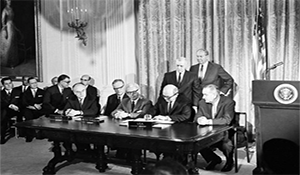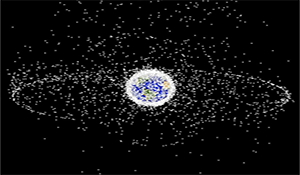
Effects of Investment on Pathways to Space Security
Effects of Investment on Pathways to Space Security Author: Dr. John Stevenson (NSI, Inc.) [Q10] Does substantial investment and heavier commitment by both governments and commercial interests provide an avenue of approach for space ‘security’ and disincentive for kinetic military action? Summary Response Expert contributors wrestle with three factors in answering this question: • Whether […]
Continue ReadingHow Disagreement Over Space Terms Can Create Barriers to Transparency in the Space Domain
How Disagreement Over Space Terms Can Create Barriers to Transparency in the Space Domain Authors: Dr. Sabrina Polansky (Pagano) (NSI, Inc.) and Dr. John Stevenson (NSI, Inc.) Abstract Because limitations space situational awareness functionally limit direct observation of adverse events in space, actors in space instead rely on other methods of making inferences about the […]
Continue ReadingVulnerability-Credibility Tradeoff in Space Domain
Space Deterrence: The Vulnerability-Credibility Tradeoff in Space Domain Deterrence Stability Authors: Ali Jafri (NSI, Inc.) and Dr. John Stevenson (NSI, Inc.) Abstract We define space deterrence as preventing intentional attacks against space capabilities, regardless of their physical location. Intentional attacks may target space capabilities to deprive space-dependent nations of the ability to leverage space capabilities […]
Continue Reading
Enforcement as Verification, and the Problem of Dual-Use
[Q21] What can the US do to best facilitate development of verifiable norms that maintain a peaceful space domain? Authors: Dr. Larry Kuznar (NSI, Inc.) and Dr. John Stevenson (NSI, Inc.) Summary Response This report describes expert views on the existence and non-existence of space norms and the challenges and opportunities norms represent for peaceful […]
Continue Reading
Governing in a Crowded Space – The Legal Regime for Space
[Q19] What international legal codes or norms are needed to govern the increasingly crowded space domain? [Q23] Fifty years of space has seen much change. Which aspects of the Outer Space Treaty of 1967 are still valid and which need updating? Is it better to add to/amend the 1967 Treaty or to establish a new […]
Continue Reading
Exploring the Economic Effects of Conflict in Space
[Q5] Is it possible to realistically quantify the economic impact of warfighting events in space (e.g., increase in insurance costs for commercial satellites, stock market perturbations of a space attack, change in consumer behavior due to disruption of communication or PNT services)? Author: Weston Aviles (NSI, Inc.) Summary Response This report captures the input of […]
Continue Reading
Int’l Rules / Norms: Constraints on Space Operations
[Q20] What are the current international agreements, treaties, conventions, etc., governing the use of space, and what specific limitations and constraints are placed on space operations? Author: Dr. Belinda Bragg (NSI, Inc.) Summary Response The expert contributors identified 26 separate international agreements, treaties, and resolutions (legal codes) that have implications for space operations (Figure 1). […]
Continue Reading
Commercial Companies’ Perceptions of Security Space
[Q6] How do commercial ventures think about the security of their space assets during peacetime, crisis and conflict? Do industry leaders think about warfare in or through space differently than military leaders? What are their main concerns? How reliant are they on governments for warning or protection of space? What are their threat priorities? Author(s): […]
Continue Reading
Pre-Space Age Approaches to Military Capabilities
[Q15] What insight on current space operations can we gain from understanding the approaches used for surveillance, reconnaissance, navigation, communication, timing synchronization, and indications and warnings before the advent of the space age? Author(s): George Popp (NSI, Inc.) Summary Response This report summarizes the input of 13 insightful responses contributed by space experts from National […]
Continue Reading
Principles of Response to Aggression in Space
[Q18] What are the principles (e.g., flexible vs. controlled response; proportionality, etc.) upon which international policy makers should develop response options for aggression in space? A Virtual Think Tank (ViTTa)® Report. Author(s): Dr. John Stevenson (NSI, Inc.) Summary Response Upon considering the question of focus, several expert contributors argue that it is confusing or even […]
Continue Reading